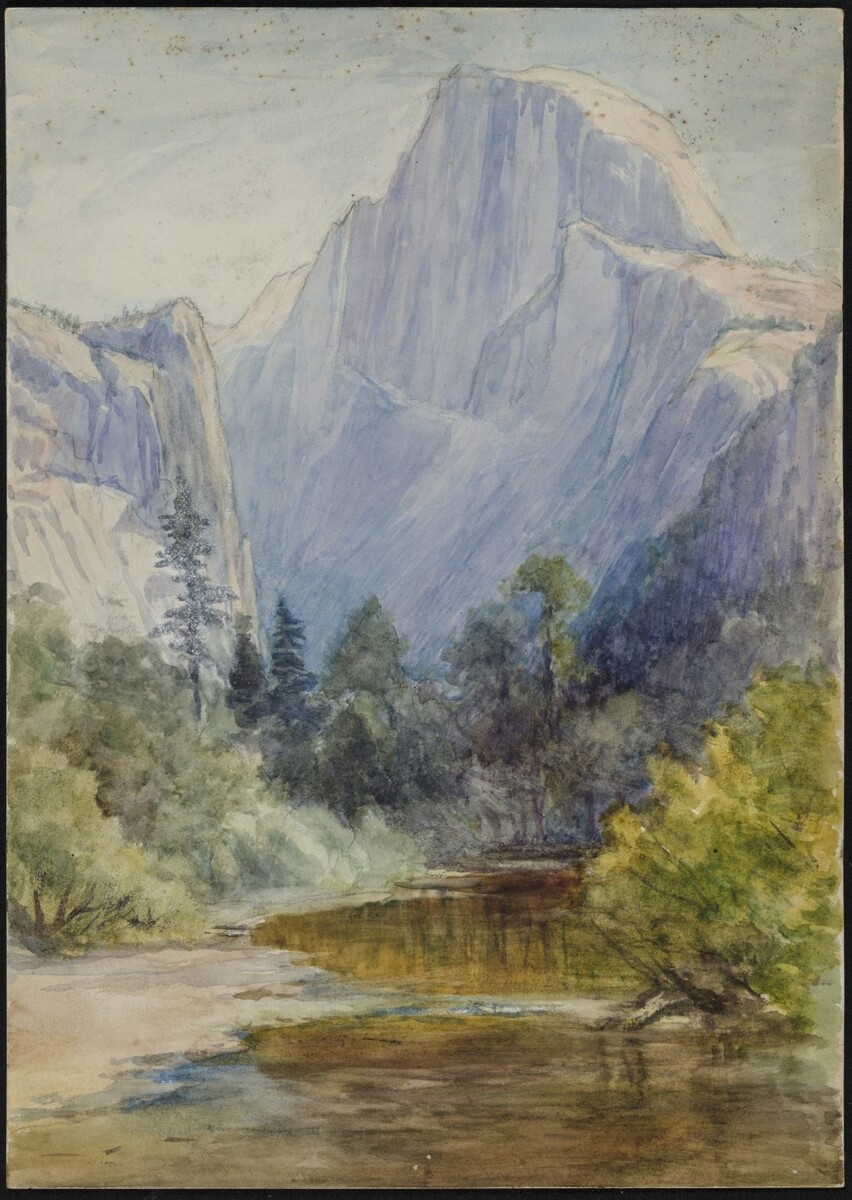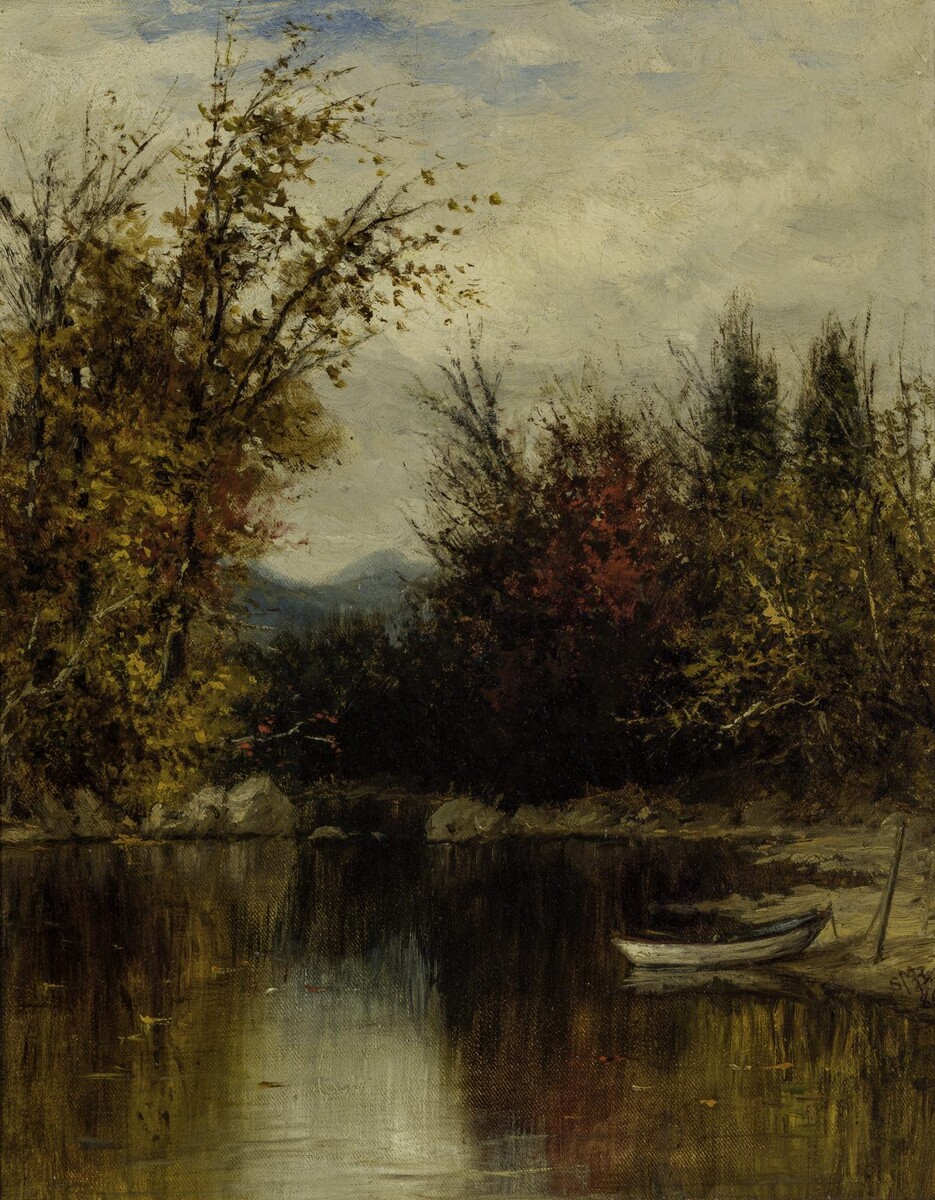Susie Barstow, a 19th-Century Artist Who Hiked Mountains in Bloomers to Paint Stunning Landscapes, Finally Gets a Museum Retrospective
Artnet News / Jul 4, 2023 / by Sarah Cascone / Go to Original

Susie M. Barstow, Sunshine in the Woods (1886). Paul Stuka Collection. Photo by Hawthorne Fine Art, New York.
When Susie M. Barstow was in search of artistic inspiration, she would head to the mountains, sketchbook in tow, reportedly hiking as many as 25 miles a day while capturing views of the natural landscape.
This dedication to her practice is all the more remarkable considering Barstow began her career in the 1850s, at a time when bloomers were still considered daring attire for women.
“Going out in long heavy woolen skirts and heels and petticoats and all of these layers was so cumbersome,” Nancy Siegel, an art history professor at Maryland’s Towson University and curator of a new exhibition on Barstow, told Artnet News.
“So there were bloomers, trousers worn under a short skirt. And women like Susie would raise the hems of their walking skirts. Some women wore boy’s tennis shoes, or would use a clothes pin to pull their dress up almost to create pantaloons while they were hiking,” she added. “There were lots of ways that women carefully and strategically manipulated their dress so that they could navigate the landscape.”

Unknown photographer, Portrait of Susie M. Barstow (ca. 1870). Private Collection, Photo by Dennis DeHart.
Born in New York City in 1836, Barstow was among some 50 women who were part of the Hudson River School, painting in the tradition started by Thomas Cole. Now, the Thomas Cole National Historic Site, the home of the founder of the movement, is hosting Barstow’s first ever retrospective, “Women Reframe American Landscape: Susie Barstow and Her Circle/Contemporary Practices.”
In 2010, the museum had staged “Remember the Ladies,” the first exhibition dedicated to the movement’s women, curated by Siegel and art dealer Jennifer Krieger. A decade later, Betsy Jack, director of the Cole house, reached out to Siegel about organizing a follow-up show, this time focused on a single artist.
Barstow—who has more than 100 documented paintings—soon emerged as a natural choice, both due to her success during her lifetime and the availability of her work, as well as a wealth of archival materials preserved by her surviving family members (much of which they recently donated to the Albany Institute of History and Art).

Susie M. Barstow’s paint box (ca. 1876). Private Collection. Photo by Dennis DeHart.
“I had access to hundreds of letters and photographs and personal memorabilia, like her certificates from school and the tickets that she saved from seeing the Columbian Exposition, as well as hundreds of drawings and watercolors as well as paintings,” Siegel said. “It was this incredibly unique opportunity first to find that much existing biographical material about any artist, much less one of these women of the Hudson River School.”
The result is a two-part exhibition pairing work by Barstow—who already had one piece in the Cole house collection—and other women of the Hudson River School, with that of contemporary women artists responding to the landscape. It’s a collaboration between Siegel, who handled the historic material (and also wrote a new monograph about Barstow), and Thomas Cole National Historic Site chief curator Kate Menconeri and assistant curator Amanda Malmstrom, who enlisted the show’s living artists.

Ebony G. Patterson, …the wailing…ushers us home…and there is a bellying on the land… (2021) in “Women Reframe American Landscape” at the Thomas Cole National Historic Site. Photo courtesy of the Thomas Cole National Historic Site, Catskill, New York.
A total of 13 contemporary artists each made new work, some site-specific, for the show: Teresita Fernández, the Guerrilla Girls, Marie Lorenz, Tanya Marcuse, Mary Mattingly, Ebony G. Patterson, Anna Plesset, Jean Shin, Wendy Red Star, Jaune Quick-to-See Smith, Cecilia Vicuña, Kay WalkingStick, and Saya Woolfalk.
“In this exhibition, we wanted to recenter women in the canon of American art, and then expand and complicate how we think about in a landscape today, because it feels like we’re in this really urgent moment,” Menconeri told Artnet News.

Teresita Fernández, Small American Fires in “Women Reframe American Landscape” at the Thomas Cole National Historic Site. Photo courtesy of the Thomas Cole National Historic Site, Catskill, New York.
Some of the works speak to contemporary concerns about the land and the environment, such as the Fernández installation Small American Fires, a series of 12 of wood panel graphite drawings of fire and a dramatic charcoal wall drawing. It’s inspired by the destructive power of fire, especially as climate change fuels more deadly blazes, but also its potential for rebirth, and the long Indigenous history of using fire to promote new growth.
Other pieces tie into the history of the Hudson River School and the Cole house more directly, like a new Guerrilla Girls poster installed in the stairway decrying the exclusion of women and artists of color from the movement—and its idealization of a landscape quickly falling victim to rampant industrialization.

Guerrilla Girls, .Guerrilla Girls Reality Check: The Hudson River School (2023) in “Women Reframe American Landscape” at the Thomas Cole National Historic Site. Photo courtesy of the Thomas Cole National Historic Site, Catskill, New York.
Cole, of course, was an early environmentalist who used his work to advocate for the preservation of the natural landscape. In his preserved studios, the curators have placed a site-specific installation by Lorenz, featuring sculptures she’s crafted from plastic and other detritus collected in New York City waterways, as well as video footage of her excursions by boat.
“Rather than painting the landscape like Cole did, Marie brings people into the landscape through this project called The Time and Tide Taxi—it’s very intrepid,” Menconeri said. “In our post-industrial moment, the land is filled with flora and fauna and plants, but also plastics and particles and toxins. So the work is really exciting. The land is damaged and it’s imperfect, but this is where we are, and she still kind of embraces it.”

Marie Lorenz’s site-specific installation in Thomas Cole’s studio in “Women Reframe American Landscape” at the Thomas Cole National Historic Site. Photo courtesy of the Thomas Cole National Historic Site, Catskill, New York.
And then there’s Plesset’s American Paradise, a new edition of the catalogue for the 1987 Hudson River School show of the same name at New York’s Metropolitan Museum of Art that did not include a single woman. Plesset’s version of the publication is open to the title page and frontispiece, which now features a Barstow painting, creating an alternate history where the accomplishments of women are included and properly appreciated.
“We felt that bringing art about land and the landscape by contemporary women artist into and in conversation with the historic interiors of our 1815 main house was important to complement and expand upon the Susie Barstow presentation in the new studio,” Malmstrom told Artnet News.
“I like to think of Susie Barstow and her circle as the founding mothers of the Hudson River school. They paved the way for future women artist to engage with the landscape,” Siegel added.

Anna Plesset, American Paradise (Second Edition) 2023. Photo courtesy of the artist
The exhibition also includes a number of historic paintings by Julie Hart Beers, Fidelia Bridges, Charlotte Buell Coman, Eliza Greatorex, Mary Josephine Walters, and Laura Woodward—women artists who showed alongside Barstow and are equally deserving, Siegel insisted, of rediscovery.
“For so many years, the scholarship has focused on the male artists of the Hudson River School,” she said, “Hopefully, this show will usher in a new curatorial era of solo exhibitions devoted to these 19th-century women landscape painters.”

Susie Barstow Skelding, Susie M. Barstow in Her Brooklyn Studio (1891). Private collection. Photo by Dennis DeHart.
Born to a middle class family in Brooklyn, Barstow studied art at the Rutgers Female Institute and Cooper Union in New York. Though there were certainly still obstacles for women interested in a professional art career, Barstow benefitted from changing attitudes about women in the second half of the 19th century.
“There was a reform movement that acknowledged the importance of women exercising,” Siegel said. “Women were riding bicycles, they were hiking, they were getting outdoors—fresh air was considered to be really restorative.”

Susie M. Barstow, The Floor of Yosemite (1889). Barstow Family Trust Collection. Photo by Chrome Digital.
And Barstow took full advantage of that new freedom of movement, extensively hiking the Catskills and Adirondacks in New York, as well as New Hampshire’s White Mountains and trips overseas to Europe and to other parts of the U.S.
She also never married or had children, which freed her of many of the domestic responsibilities that so often limited women’s art careers. Barstow did, however, have a companion, a fellow landscape artist named Florence Nightingale Thallon, with whom she lived and traveled for some 20 years.

Susie M. Barstow, Early October Near Lake Squam. Collection of Suzanne H. Arnold Gallery, Lebanon Valley College Fine Art Collection, Lebanon, Pennsylvania. Photo by Andrew Bale, courtesy of the Thomas Cole National Historic Site, Catskill, New York.
“I don’t want to speculate in terms of whether this was a relationship of a sexual nature, but I would certainly say it was a very intimate friendship,” Siegel said.
Though we may never know the full details of her personal life, what’s clear is that Barstow worked incredibly hard in her 87 years. Early in her career, Barstow wrote that “I will overcome every obstacle to success.” Remarkably, she did just that.

Susie M. Barstow, The Ruins of Kenilworth Castle (1880). Barstow Family Trust Collection. Photo by Chrome Digital.
“Susie Barstow was incredibly well known. Her work sold for comparable prices as her male counterparts, and she showed in all the exhibitions that men like Asher B. Durand and Albert Bierstadt were showing in,” Siegel said.
“But there’s this moment of art historical amnesia in the interwar years between, after World War I and before World War II and all these women artists seem to disappear,” she added. “And now it’s time that we’re writing them back into history.”
“Women Reframe American Landscape: Susie Barstow and Her Circle/Contemporary Practices” is on view at the Thomas Cole National Historic Site, 218 Spring Street, Catskill, New York, May 6–October 29, 2023, and at the New Britain Museum of American Art, 56 Lexington Street, New Britain, Connecticut, November 16, 2023–March 31, 2024. It will also travel to the Leigh Yawkey Woodson Art Museum, 700 North 12th Street, Wausau, Wisconsin.






